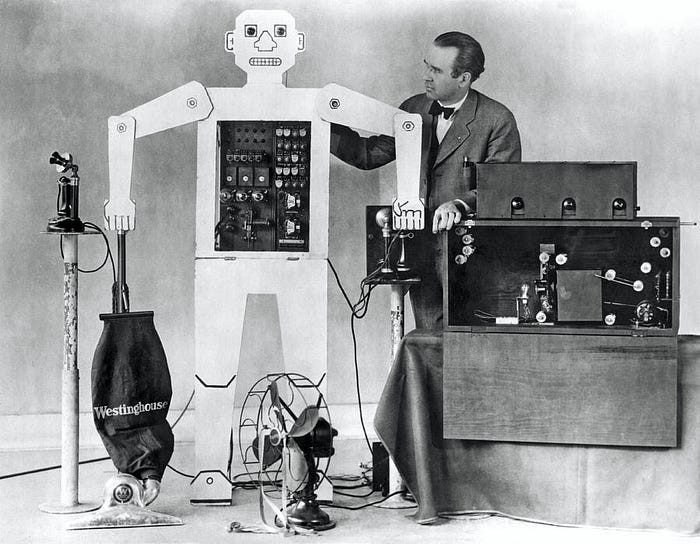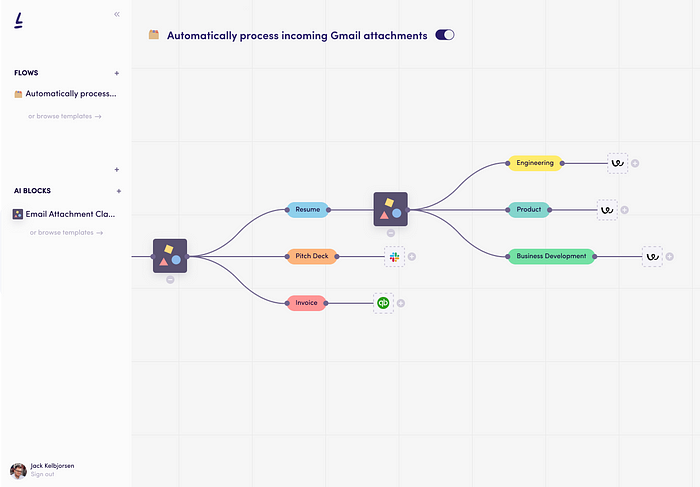
A no-code ML-powered workflow on every desktop
Why we invested in Levity.ai
We are delighted to announce that our portfolio company Levity and, more importantly, the product they are building, are finally out of stealth mode. We wanted to share a bit of the thinking behind our investment in the company and, as a result, where we think a big part of the workflow automation market is headed.

When Andrew and I first met Levity in the fall of 2019, we were immediately impressed by the scale of the team’s vision — and by the very steep slope of the mountain they had set out to climb.
Two key insights
Levity is based on two key insights about where ML is headed: radical democratization and radical commoditization. We’ve been believers in both for a long time, and, when we met Levity, we found a team that was taking those two beliefs to their logical conclusion:
- Democratization: The promise of AI for everyone. The team’s first insight is that the vast majority of knowledge workers will be able to benefit from some form of machine learning. When the challenges of building AI/ML applications from scratch are considered, most use cases just disappear. I wish I could automatically categorize pitch decks as “enterprise” or “consumer” but the cost and effort of building and maintaining an AI/ML application to do this is prohibitive. As a knowledge worker, I could string some logic together with Zapier perhaps, but the critical value drivers of that application are in my head — the specific heuristics that I use to make that determination (which might be different from those of many other VCs). In other words, my personal decision drivers are impossible to recreate through a set of rules. If, however, the cost and complexity of building AI/ML-powered applications were eliminated, I can think of many use cases for AI/ML in my line of work — and many more for almost any category of knowledge worker I can think of. The Levity team knew just how big the AI/ML opportunity is going to be, and is approaching the problem from the perspective of maximizing the market opportunity.
- Commoditization: The myth of proprietary AI. Second, the vast majority of ML techniques and methodologies will be fully commoditized and relatively easy to build in most cases. For most use cases and most users, ML knowledge is not going to be a differentiator. While AI/ML is nearly impossible for a non-expert to implement, it is not really a source of competitive advantage for people who are experts. In the vast majority of potential use cases, the underlying “brains” of the models are not that unique. The classifiers and DNNs that one would build to classify images as a “dog” or a “cat” are pretty-much off-the-shelf at this point. The only true differentiator in today’s ML world is the access to large amounts of clean data — and Levity is building a toolset to exponentially increase that crucial value driver.
UX is the answer to the paradox of AI/ML democratization.
What does it mean when a massive opportunity due to a revolutionary technology is right around the corner — but seemingly impossible to achieve despite the absence of proprietary technology in the field? In other words — if nearly any data scientist can pretty easily build an image classifier, why can’t I — as a non-technical user — build my own image classifier for a specific use case where I have the training data and the labels?
User experience (UX) is the answer. Levity’s answer to the paradox of AI/ML democratization is in user experience. Levity’s goal is to allow any user to rapidly, easily, and enjoyably build complex, powerful, data-driven workflows — fully automated and powered by best-of-breed machine learning technology under the hood. Levity is making ML-powered workflows as easy to build as a slide deck. When we initially diligenced the earliest versions of the product, the feedback we got was “under the hood, it’s not rocket science — but the experience is delightful!” — Bingo.
Real-world use cases abound. One of my favorite examples of Levity in action is at a veterinary clinic in Germany. They are using Levity to automate their process of classifying images of dog poop for worm infestation analyses. Using Levity, they built their own image classifier based on hundreds of microscope photographs of dog poop — some of which contain parasites. This process saves hundreds of man-hours of time — and is simply too much of a unique use case for any “off-the-shelf” product to exist. Our bet is that there are hundreds of potential use cases out there that are similarly “simple,” similarly valuable, and just waiting for the right toolset to come along.
An ambitious challenge. What appealed to us so much about Levity was that the team correctly recognized that the real challenge here is a UX challenge — and what a challenge it is! Levity is bringing an entirely new capability set to a broad set of users that perhaps want the benefits of AI/ML but do not have any interest or need to go deep on the technical internals of such a solution. To succeed, Levity needs to teach users what can be done with such a platform and teach them how to do it. Levity needs to guide users through the process of defining a workflow, defining an AI/ML objective, uploading and categorizing training data, or choosing from a set of pre-built templates. Levity needs to communicate with users about the limitations and capabilities of each automation. Levity needs to inspire users without frustrating them, and educate them without intimidating them. These are massive challenges. Just the sort of challenge Angular was designed to help founders overcome.
A mission-driven team. The two founders of Levity, Gero and Thilo, are stellar, inspirational, and deeply dedicated to the company’s mission. They are first-time founders, they are self-taught engineers and product managers, and they are certainly not data scientists (something we consider a positive in this case). We are absolutely thrilled to be partnered with them. As with all our investments, it is ultimately the founders that form the crux of our investment thesis.

A market that doesn’t exist. Yet.
Unlocking a massive horizontal market that doesn’t (yet) exist. Levity is one of a relatively short list of truly transformational companies that is attempting to unlock a massive horizontal market by enabling citizen-users to do something they could not have done before. Microsoft allowed anyone to create, print, and share documents. Wix and Squarespace allowed anyone to create a website. Airtable allowed anyone to create a data warehouse and build applications on top of it. Roblox allowed anyone to build and share a game. Bubble allowed anyone to create applications.
Levity will allow anyone — not just data scientists or developers but anyone — to create an AI/ML-powered workflow automation to help them in their daily life. This is a new category — a critical part of every knowledge worker’s toolset. Unlike current RPA solutions which are difficult and expensive to implement (and quite brittle), Levity is designed from the ground up to allow everyone to easily build workflows. And unlike many point-solutions for automatic document classification, Levity is a truly horizontal play. As their advisor David Peterson of Airtable recently tweeted, building truly horizontal tools is far more valuable and far harder than trying to solve a specific narrow vertical.
Over time, we believe that Levity will become a critical part of every knowledge worker’s personal tech stack — and we invite you to be among the first to try it.

